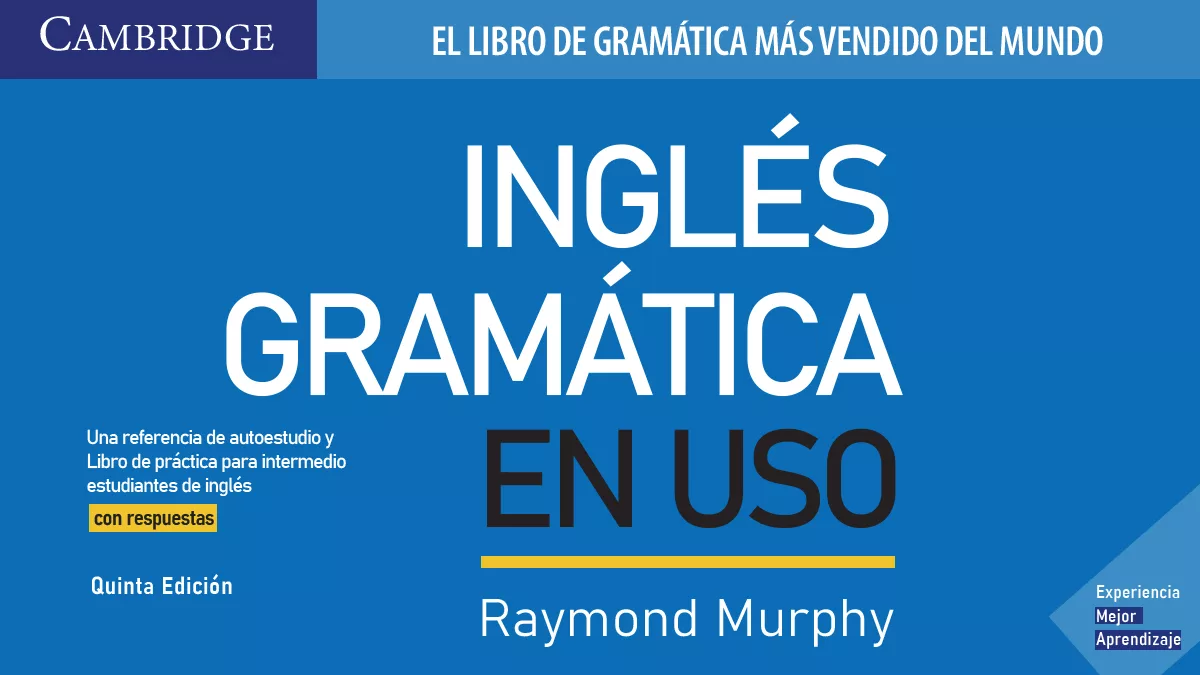In this comprehensive guide, we delve into the diverse and extensive world of intermediate English, drawing from the acclaimed resource, Raymond Murphy’s ‘English Grammar in Use’. This is a self-study reference and practice book that is designed specifically for intermediate learners. The book promises to cover all the grammar required for this level, making it an invaluable tool for anyone keen on honing their English language skills.
Murphy’s ‘English Grammar in Use’ earns its place as a first choice for learners due to its clear and concise explanations, coupled with practical exercises. These components have aided millions of people globally to improve their English. Its effectiveness is evident in the success stories of its users, marking it as a top choice for individuals aiming to advance their English grammar.
Apart from being a tool for self-study, the book also serves as a supplementary resource in classrooms. Teachers can utilize this book to complement their teaching materials, enriching their lesson plans with additional exercises and detailed explanations. Truly, Raymond Murphy’s ‘English Grammar in Use’ stands as a beacon for anyone desiring to master intermediate English.
An overview of the book’s structure

‘English Grammar in Use’ is meticulously structured, designed to facilitate gradual learning and comprehension of the nuances of intermediate English grammar. The book features a modular approach where each unit is self-contained, focusing on a specific grammatical concept. This approach makes it easy for learners to choose a lesson based on their immediate need, making the book a flexible tool for both self-paced learning and classroom instruction.
The book starts with simpler concepts and gradually moves on to more complex grammar structures, mirroring the natural progression of language learning. It presents every grammar rule with ample context, offering examples and comparing similar, yet distinct grammatical structures. This comprehensive presentation of grammar rules allows learners to understand not just the ‘how’, but also the ‘why’ behind the usage of each structure.
The essence of this book lies in its practice exercises. Each unit is accompanied by exercises that challenge the learner to apply the concepts learned. These exercises are meticulously curated to reinforce the key learning points of each lesson. Through these exercises, learners can gauge their understanding and mastery of each concept, making ‘English Grammar in Use’ a true self-study tool. Moreover, the book offers answers to these exercises, providing immediate feedback to learners and aiding in their learning journey.
The pedagogical approach of Raymond Murphy

Raymond Murphy’s pedagogical approach underpinning ‘English Grammar in Use’ is both intuitive and strategically designed to enhance the learning experience. The method is grounded in the principle of learning through practice, allowing learners to grasp complex grammatical concepts through repeated, hands-on experience. This approach is especially effective in reinforcing the nuances of the English language, as learners can internalize the rules of grammar through practical application rather than mere memorization.
Furthermore, Murphy’s educational approach encourages self-paced learning. By designing each unit as a standalone module, learners are given the freedom to choose the pace and sequence of their learning journey. This flexibility allows for a more personalized learning experience, catering to individual strengths and weaknesses. This unique feature of the book makes it an outstanding tool for both dedicated self-learners and teachers looking to adapt their instructional materials to the unique needs of their students.
Lastly, the inclusion of answers in the book adds significant value to the learning process. Immediate feedback is an essential component of effective learning, as it enables learners to identify mistakes and understand the correct application of grammar rules. This feature transforms ‘English Grammar in Use’ into a comprehensive self-study tool, as learners can track their own progress and improvement, making it a truly effective resource for mastering intermediate English.
Exploring the various grammar topics

The ‘English Grammar in Use’ explores a wide array of grammar topics, offering an in-depth analysis of each. From the basic coverage of tenses and verb forms to the intricate details of reported speech and passive voice, the book encompasses all the essential elements of intermediate English grammar. The comprehensive nature of the book ensures that no crucial grammar component is left out. The book’s extensive nature, combined with its detailed explanations and practical exercises, positions it as a one-stop resource for mastering intermediate English.
Moreover, the book takes into account the varied learning curves of its readers. The arrangement and progression of the grammar topics are deliberately designed to cater to the different learning needs and paces. It kicks off with simpler, more foundational grammar concepts and gradually escalates to more complex structures. This thoughtful progression mirrors the natural language learning path, making the transition seamless and the learning process more enjoyable and effective for the learners.
In addition, ‘English Grammar in Use’ is more than just a grammar reference. It is a tool that encourages active learning. Each grammar topic is followed by a series of practice exercises that demand the application of the learned concepts. These exercises are carefully designed to challenge the learner’s understanding and application of the grammar rules. By actively engaging the readers in problem-solving, the book stimulates a deeper level of processing, facilitating the consolidation and retention of the learned grammar topics. This active engagement transforms learning from a passive activity to an active, stimulating process, making ‘English Grammar in Use’ a valuable asset in the journey of mastering intermediate English.
Understanding complex grammar rules

‘English Grammar in Use’ also serves as a handy guide for the understanding of complex grammar rules. The book demystifies intricate grammatical concepts, presenting them in a straightforward, intuitive manner. To aid comprehension, the complex rules are broken down into smaller, manageable parts. Each part is then explained in detail, with a plethora of examples to illustrate its usage in various contexts. The examples are crafted in a way that they represent a wide range of conversational and formal uses of the language. This methodological breakdown and illustrative representation of complex rules make them less daunting and more digestible to the learner.
The book also adopts a comparative approach to explaining complex grammar rules. It juxtaposes similar grammatical structures, highlighting their differences and usage. This comparison helps learners understand the subtle distinctions between seemingly similar grammar structures. By drawing comparisons, learners are able to grasp the nuances of the English language, making them more proficient and confident in their usage of the language in different scenarios.
In addition, ‘English Grammar in Use’ emphasizes the importance of understanding the rationale behind the grammar rules. It goes beyond just stating the rules and dwells into the ‘why’ aspect. This approach helps the learner comprehend the logic behind the usage of different grammar structures. It fosters a deep-rooted understanding of the language, enabling learners to use the English language more effectively and accurately. This emphasis on the understanding of the reasoning behind the complex rules sets ‘English Grammar in Use’ apart from other grammar reference books.
The significance of practical exercises

The practical exercises peppered throughout ‘English Grammar in Use’ are instrumental in solidifying understanding and promoting the retention of grammatical concepts. By creating a platform for learners to put their knowledge into action, the book succeeds in bridging the gap between theoretical understanding and practical application. Each exercise is purposefully constructed to test the learner’s grasp of the preceding grammar topic, with a range of question styles that mirror real-life language use. This variety ensures that learners are equipped to handle all forms of English communication, be it written texts or spoken dialogues.
Beyond testing understanding, these exercises also function as a self-assessment tool. By scoring their own responses, learners are able to gauge their progress and identify areas that require further reinforcement. This instant feedback loop fosters a sense of self-directed learning, as learners take control of their learning trajectory, prioritizing topics accordingly based on their self-assessed performance. With the answers provided, learners are not only aware of their mistakes but also gain insight into the correct application of the grammar rules. This self-correction mechanism is a powerful learning tool, enabling learners to learn from their errors and avoid repeating them in future.
Moreover, these practical exercises make the learning process dynamic and engaging. The act of actively applying knowledge is more stimulating than passive reading, keeping learners motivated and invested in the process. This hands-on approach keeps the learning momentum going, making the journey of mastering intermediate English enjoyable and rewarding. By integrating practical exercises into the learning process, ‘English Grammar in Use’ succeeds in creating an active, self-directed learning environment that is both effective and engaging.
May Help You:
Master English Fast: Speak Confidently in 30 Days with Everyday Conversations
Unlocking Fluent Conversations: A Review of ‘Conversational English in 100 Days’
The global impact of the book

The global influence of ‘English Grammar in Use’ is vast and impactful. Since its first publication, the book has been adopted by educational institutions worldwide as an essential tool for English language learning. It has been translated into numerous languages, making it accessible to a diverse demographic of learners. The universal appeal of the book lies in its clear, intuitive approach to English grammar, making it relevant to learners regardless of their cultural or linguistic backgrounds.
The book’s widespread use has contributed to the improvement of English proficiency levels globally. By equipping learners with a solid understanding and practical application of English grammar, ‘English Grammar in Use’ has been instrumental in shaping confident, competent English speakers. This has had a significant impact on the global scene, as English proficiency is often synonymous with opportunities in education, work, and social mobility. The book’s role in enhancing English proficiency has therefore indirectly contributed to the personal and professional development of individuals worldwide.
Moreover, ‘English Grammar in Use’ has also inspired a paradigm shift in English language teaching methodologies. Its focus on active learning and self-assessment has encouraged educators to move away from traditional, teacher-centric methods towards more learner-centric approaches. This shift has transformed English language classrooms into more interactive, engaging spaces that foster independent, self-directed learning. The influence of ‘English Grammar in Use’ thus extends beyond the individual learner, shaping educational practices and pedagogies in the realm of English language learning.
A closer look at success stories

Countless success stories attest to the transformative power of ‘English Grammar in Use’. Individuals from across the globe have shared their personal experiences of how the book has significantly improved their English language skills. These stories range from professionals who have advanced in their careers due to improved proficiency, to students who have excelled in their academic pursuits, and even to immigrants who have successfully integrated into English-speaking societies. The book’s practical, learner-centric approach has enabled these individuals to overcome their language barriers and achieve their personal and professional goals.
The book’s universal appeal is underscored by the diversity of its success stories. Learners from various linguistic backgrounds and proficiency levels have benefitted from its comprehensive, intuitive approach to English grammar. For instance, a South Korean engineer was able to secure a job in an international firm owing to his improved English skills, while a Brazilian student aced her English proficiency exam after studying from the book. These examples demonstrate how ‘English Grammar in Use’ caters to a wide spectrum of learners, from intermediate to advanced, and from different walks of life.
The success stories of ‘English Grammar in Use’ are not confined to individual learners but also extend to educational institutions. Schools and universities globally have reported marked improvements in their students’ English proficiency levels after implementing the book into their curriculum. Teachers have noted increased student engagement and improved performance, crediting the book’s practical exercises and self-assessment tools for creating a more dynamic, interactive learning environment. The broad scope and deep impact of the book’s success stories serve as a testament to its effectiveness and worldwide appeal.
the book as a resource in classroom settings
‘English Grammar in Use’ has proven itself to be an invaluable resource in classroom settings, given its meticulously structured content and learner-centric approach. Teachers often use it as a supplementary tool to reinforce grammar concepts taught in class. The book’s clear, concise explanations and illustrative examples make complex grammar rules more digestible for students. By referring to the book, teachers can ensure that students have a comprehensive understanding of English grammar, which forms the foundation for more advanced language skills such as writing and speaking.
One of the most significant advantages of using the book in a classroom setting is its focus on practical exercises. The book offers a wealth of exercises that cover a broad range of grammar topics, enabling teachers to provide students with ample practice opportunities. This integration of theory and practice is crucial for effective language learning. Teachers can assign these exercises as homework or use them in class activities, encouraging students to apply what they’ve learned and thereby solidifying their understanding.
However, the benefits of ‘English Grammar in Use’ go beyond just aiding in grammar instruction. It also promotes a culture of self-directed learning in the classroom. The self-assessment feature of the book encourages students to take charge of their own learning and track their progress. This fosters a sense of responsibility and independence among students, skills that are not only vital for language learning but also for their overall academic and personal growth. Thus, ‘English Grammar in Use’ not only serves as a tool for teaching English grammar, but it also facilitates the development of critical learning skills.
A reflection on the book’s role
Reflecting on the role of ‘English Grammar in Use’, it is unequivocal that the book has significantly shaped the landscape of English language learning and teaching. Its success is not only reflected in the countless individuals it has aided in mastering the English language but also in the way it has transformed pedagogical practices. The book’s unique blend of comprehensive content, practical exercises, and self-assessment tools has revolutionized the way English grammar is taught and learned in classrooms worldwide. As a result, it has contributed to the development of a new generation of confident, competent English speakers.
Moreover, ‘English Grammar in Use’ has also bridged the gap between different cultures and societies. Given its worldwide recognition and adoption, the book has effectively provided a universal platform for English language learning. It has rendered the English language more accessible to individuals of various ethnic, social, and linguistic backgrounds, thereby promoting linguistic diversity and cultural exchange. This has also had wider social implications, as improved English proficiency often equates to better educational and employment opportunities, thereby facilitating social mobility and integration.
Finally, the book’s role extends beyond that of an educational resource. It also serves as an agent of change, fostering a culture of self-directed learning among its users. The book encourages learners to take control of their learning journey, an approach that not only enhances language proficiency but also empowers learners with critical life skills such as self-discipline, responsibility, and independence. In this sense, ‘English Grammar in Use’ plays an instrumental role not only in language acquisition but also in the holistic development of individuals.

